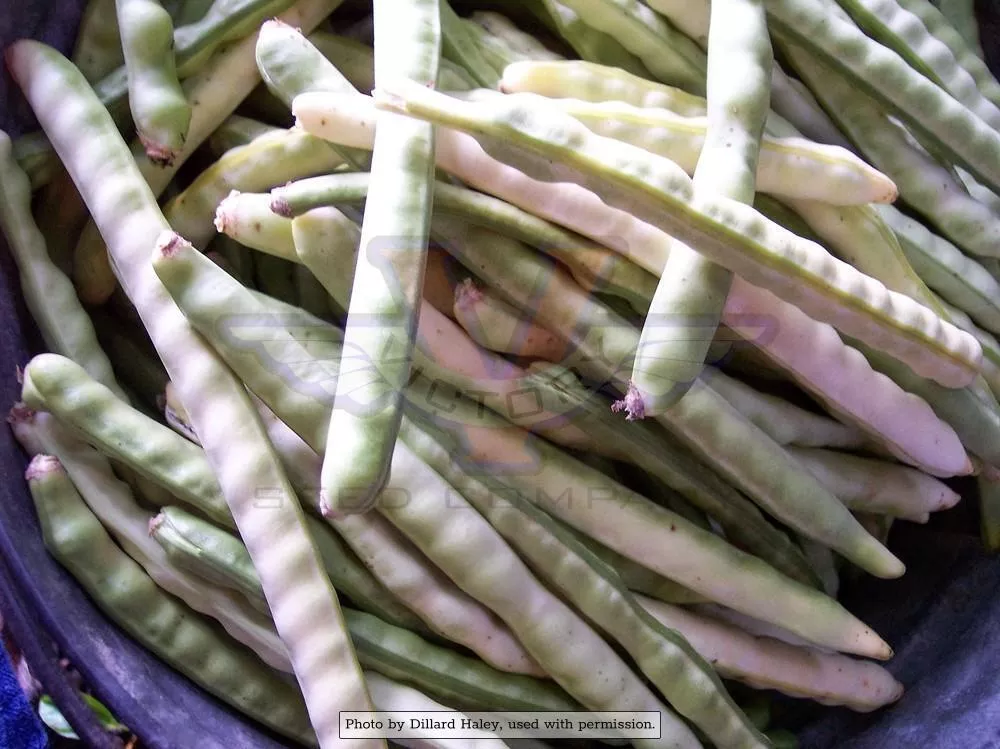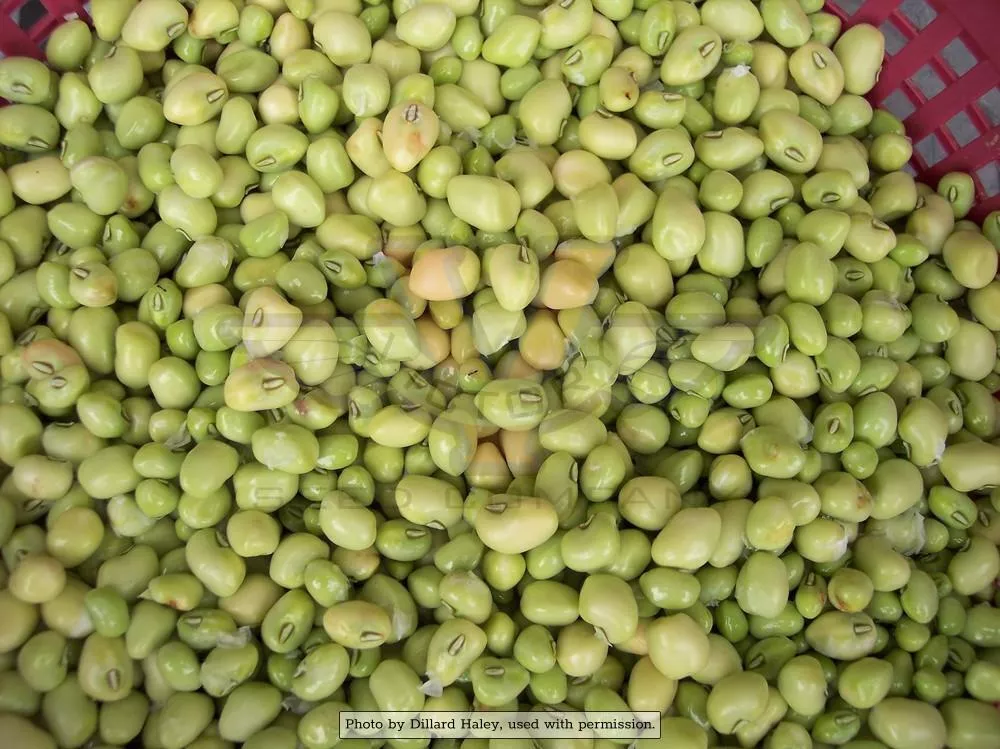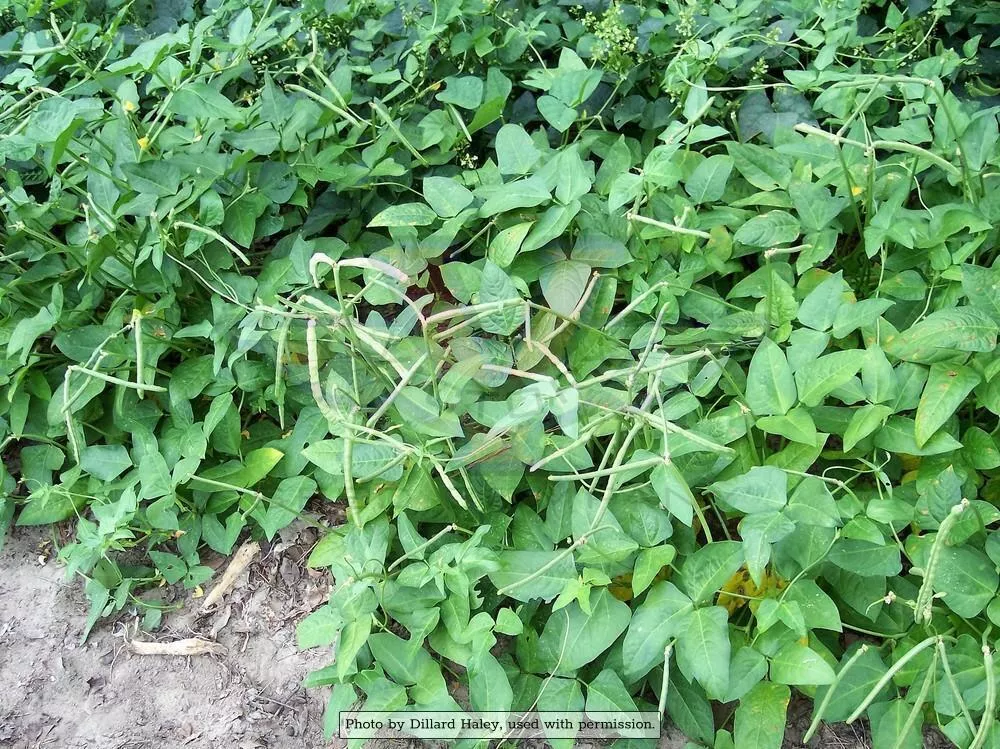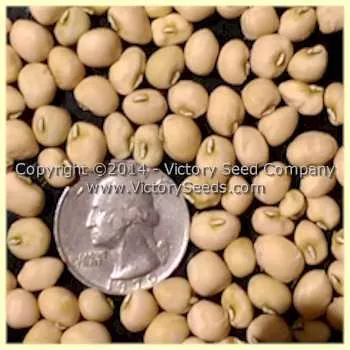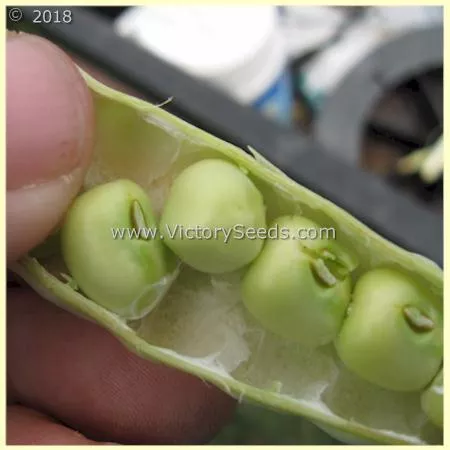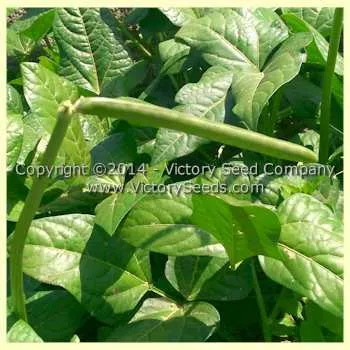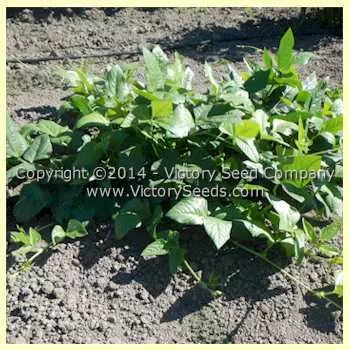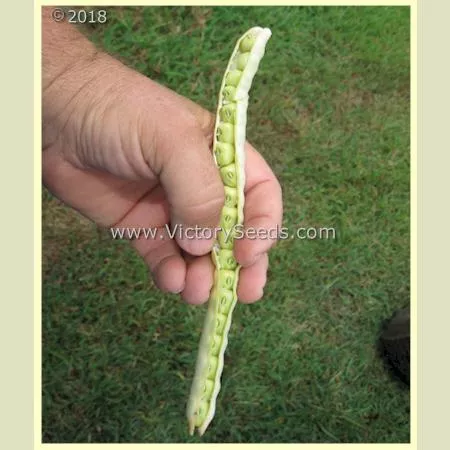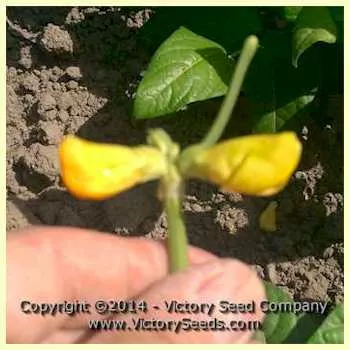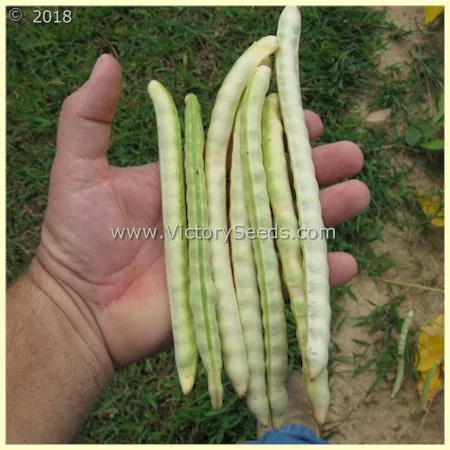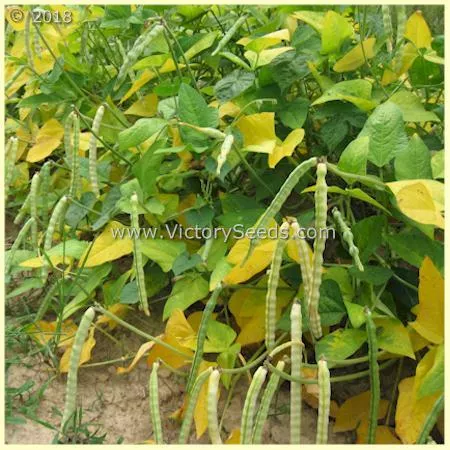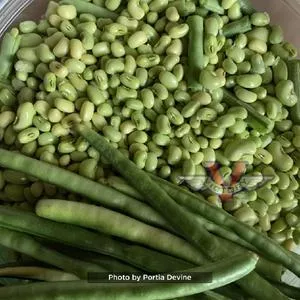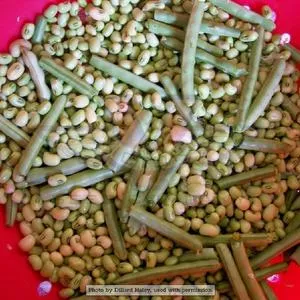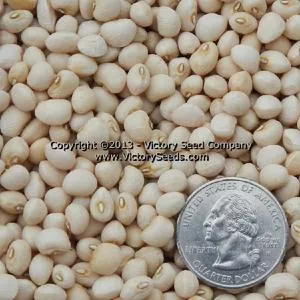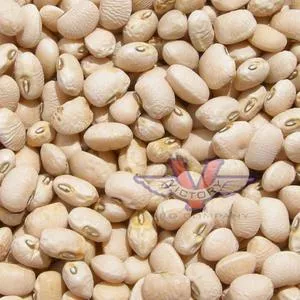










Zipper Cream Southern Pea
Vigna unguiculata
Price: $3.98
SKU: 3300111Choose a variant:
66 days - 'Zipper Cream' is an easy shelling cream pea with high yields and a delicious flavor. It is great both fresh or processed. The pods are medium green in color with large white, creamy peas. At the green-shell stage, the string in the pod acts like a zipper making shelling easier. The pod turns a straw color when dry. The plants are a low, bushy-type structure with extensive runners. This makes them very productive.
Developed by the Florida Agricultural Experiment Station in Gainesville, Florida by stabilizing a complex cross involving 'Korean Crowder', 'Mississippi 32', and 'Running Acre' and introduced in 1972.[2] They are resistant to root knot nematodes[1] and although primarily adapted for longer, Southern growing seasons, they do well for us here on the farm in Oregon. That said, our dry pea harvest is primarily made from the pods that set on the bushy part of the plant, whereas in locations with longer growing seasons, the pods on the runners would be able to reach maturity as well. Seeds are Treated.
Developed by the Florida Agricultural Experiment Station in Gainesville, Florida by stabilizing a complex cross involving 'Korean Crowder', 'Mississippi 32', and 'Running Acre' and introduced in 1972.[2] They are resistant to root knot nematodes[1] and although primarily adapted for longer, Southern growing seasons, they do well for us here on the farm in Oregon. That said, our dry pea harvest is primarily made from the pods that set on the bushy part of the plant, whereas in locations with longer growing seasons, the pods on the runners would be able to reach maturity as well. Seeds are Treated.
Genetic Classification: Open Pollinated
Planting Instructions:
Loosen the soil in a location that receives at least 6 to 8 hours of full sunlight per day. Add compost or fertilizer before planting and not after.
Sow seeds directly outdoors as soon as soil temperatures reach 70F. Optimal germination occurs between 75 to 95F. Plant ½ to one inch deep, 1 to 2 seeds every two inches. Keep moist until germination. Thin to one plant every 3 to 6 inches in rows spaced 24 to 36 inches apart. Irrigation is normally not necessary as they are renowned for their ability to grow under harsh conditions. For improved germination of hard seed, soak in warm water for four hours just prior to sowing.
Sow seeds directly outdoors as soon as soil temperatures reach 70F. Optimal germination occurs between 75 to 95F. Plant ½ to one inch deep, 1 to 2 seeds every two inches. Keep moist until germination. Thin to one plant every 3 to 6 inches in rows spaced 24 to 36 inches apart. Irrigation is normally not necessary as they are renowned for their ability to grow under harsh conditions. For improved germination of hard seed, soak in warm water for four hours just prior to sowing.
References:
- "The Plant Disease Handbook," Texas A&M University
- "Vegetable Cultivar Descriptions for North America - Southernpea (Cowpea), Lists 1-26 Combined," Edited by Richard Fery, USDA/ARS Vegetable Laboratory, Charleston, SC
Customer Reviews:
Do you have experience with this one? 📝 📣 Write a review!
★★★★★ grew great
By Tim (Denver, CO) on October 29, 2024
By Tim (Denver, CO) on October 29, 2024
I've found peas easy to grow so I had high expectations, and these did not dissapoint.
★★★★★ Zipper Peas
By Susan (KY) on September 3, 2024
By Susan (KY) on September 3, 2024
Did very well, excellent crop with full pods. The taste of the peas was great and my spouse , a picky eater, loved them!
The vines grew longer than anticipated and needed support. When the "northern" beans usually grown in this area were failing due to the heat and dry conditions, the zipper peas were lush.

